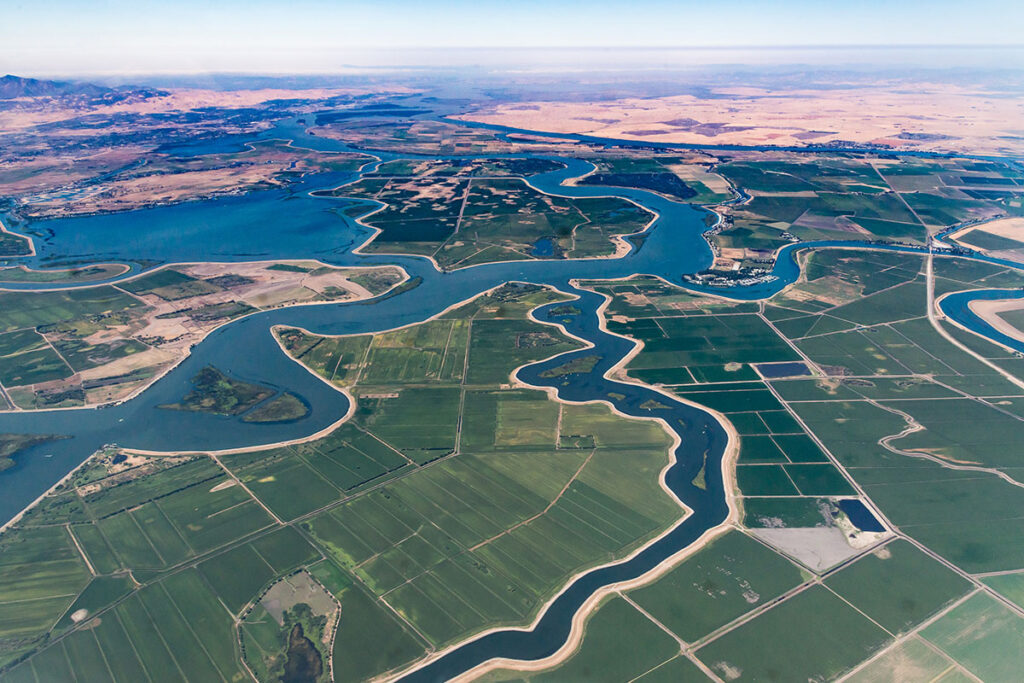In this unit, students investigate the need to manage water in California as both a phenomenon to explain and a problem to solve. In doing so, students develop a foundational understanding of California’s water supply systems, investigate the environmental, social, and economic factors that influence water management decisions, and reflect on ways to improve water management and ensure a sustainable water future for California.
While investigating water management in California, students will define the problem of needing to manage water sustainably, identify affected parties, and determine criteria and constraints for a solution. Students then ask questions about the factors that contribute to the water management problem and about potential solutions. This includes analyzing case studies and data to identify causes of the water management challenges, including aspects of water supply systems and climate-related causes. Students will evaluate the effects of past water management strategies, such as the Klamath River Dams and the Los Angeles Aqueduct, then engage in critical conversations about environmental justice issues related to water management. Using the class consensus final explanatory model, the unit culminates with students developing an action plan for addressing the water management problem in California.

“From my students: ‘Thank you for teaching us this lesson because if you didn’t it would be bad for our environment.’ ‘This was awesome! Can you do more? Thank you!’ ‘Thank you for helping us in taking care of the environment.'”
“For my students who may not engage with abstract concepts, the real-life relevance of turning waste into soil for growing plants offers a clear, meaningful goal that they can understand and feel proud to participate in.”
“The message that there are solutions to help us combat climate change and that people are working together to solve problems helped students stay in a place of curiosity; they didn’t show anxiety over the content.”
“There is something for all different kinds of learners. We are moving spaces, drawing, talking in big and small groups, writing. Some of my kiddos who would have been disengaged quite possibly the entire time were engaged in at least two or more parts of this lesson.”
“I have learned ways to improve my teaching, and I have been at this for 38 years. The students are gaining a deeper understanding of what climate change is: what causes climate change, and the impact of climate change on crop yield.”
“What I find interesting is that students are discussing the material outside of class time. I heard students discussing the ideas before class in the hallways and even during lunch periods.”
“Students really enjoyed the hands-on activity. They were very interested to learn about the different pollutants that they’ve never heard of. It also developed their curiosity about air quality and pollution. It was an eye-opener for some that they are able to see what is mostly ‘unseen’ by everyone.”
“This lesson brought in cultural stories from the original people who inhabited California. This is a perspective that is not often taught in science. I think that the kids liked having science be a little less facts and figures and more story.”
“I am so amazed and impressed by the depth of resources that you embedded in the teacher guide. This is really well put together.”
“Using the maps and seeing things like schools and how close they are to hazards is really cool. They may not be super connected personally, but they can put themselves in the shoes of other kids and try to relate. I know it’s working because I have a kid that just watches Netflix all day, every day and he pulled out his earbud and participated!”
“Every lesson was so thoroughly designed, the case study design book was beautifully organized, and it helped to give my class a real-life understanding of how college/graduate-level academic research works. Being able to connect their research back to environmental issues they actually experience was simply icing on the cake. Well done!”
“When you’re out in the workforce, you’re trying to solve problems that don’t have a clear, immediate answer. So doing stuff like this helps give students practice.”

Mackenzie Clark, Curriculum Developer
Brianna Reilly, Curriculum Developer
Logan Schmidt, Curriculum Developer
Tiffany Baca, Metropolitan Water District of Orange County
Nina Barcelli, Science Educator
Jean Flanagan, BSCS
Dina Gilio-Whitaker, CSU, San Marcos
Monica Maynard, Montebello USD
Milton Reynolds, Steering Committee
Karen Swan, Metropolitan Water District of Southern California
Matt Ellinger, Designer
Sara Krauskopf, Curriculum Developer
Stacey Lane, Illustrator
Susan Lyons, Development Editor
Ladie Malek, Development Editor
Josh Paschedag, Curriculum Developer
Laura Tucker, Science Educator
Craig Manges, Lemoore Union HSD
Katherine Morris, The Waverly School
Perri Rios-Dominguez, Salinas UHSD
Noel Rohland, Mt. Diablo USD